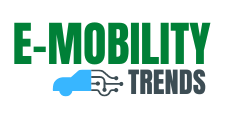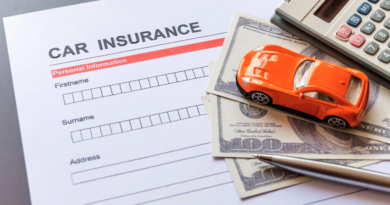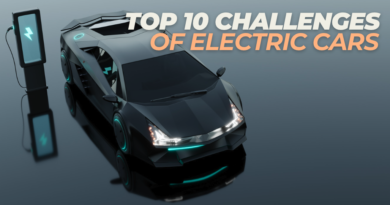How to Save on Tesla Car Insurance in 2025: Real Costs, Smart Tips, and Coverage Strategies
Target Keywords: how to save on Tesla car insurance, Tesla insurance cost, Tesla Model Y insurance, Tesla Model 3 vs Model S insurance, electric vehicle insurance tips, best Tesla insurance coverage, Tesla Insurance vs GEICO
If you’re buying or already own a Tesla, you’ve likely discovered that insuring a Tesla costs more than your average car. Whether it’s the tech-packed Model S, the family-friendly Model Y, or the budget-friendly Model 3, Teslas tend to carry higher premiums due to their complex repair needs and luxury status.
But here’s the good news: with the right strategy, you can bring those premiums down—without compromising coverage. In this updated 2025 guide, we break down real insurance costs for each Tesla model, explain the features that influence your rates, and offer nine smart tips to reduce your premium.
How Much Does It Cost to Insure a Tesla?
Let’s start with real numbers. Tesla insurance rates vary by model, and they tend to be higher than average due to the brand’s high-end electronics, proprietary parts, and labor-intensive repairs.
Here’s what it currently costs, on average, to insure Tesla’s most popular vehicles in 2025:
| Tesla Model | Average Annual Premium (Full Coverage) |
|---|---|
| Model 3 | $3,528 |
| Model Y | $3,889 |
| Model S | $4,956 |
| Model X | $5,523 |
Source: Quadrant Information Services, 2025.
Why so high? These are premium electric vehicles packed with sensors, cameras, and tech systems that are expensive to repair or replace in the event of a crash. Plus, Tesla’s aluminum body construction and limited repair network can further drive up costs.
That said, your own rate may vary significantly depending on location, driving record, credit history, and chosen coverage. Comparing quotes remains the best way to find affordable Tesla insurance tailored to your profile.
Model Breakdown: Tesla Trim Levels and Starting Prices for 2025
Before diving into how to save on insurance, let’s explore what makes each Tesla model unique—and how it affects premiums.
- Model 3 (Starting at $34,990): Tesla’s most affordable and efficient EV. The Long Range RWD model offers an impressive 363 miles of EPA range. Insurance is relatively lower thanks to simpler construction and smaller battery.
- Model Y (Starting at $46,880): Tesla’s best-selling vehicle and America’s most popular EV. Available in Long Range and Performance trims, the Model Y blends practicality with power—though the Performance trim can raise insurance rates.
- Model S (Starting at $79,990): A luxury sedan with dual motors and serious performance. The Plaid version delivers 0–60 mph in 2.1 seconds with a tri-motor setup, but its speed comes at the cost of higher insurance premiums and lower range.
- Model X (Starting at $84,990): Known for its falcon-wing doors and 3-row seating, the Model X is Tesla’s most expensive and complex vehicle to insure. Repairs are costly, but coverage is essential given its tech content and size.
Why Tesla Insurance Is More Expensive (And What You Can Do About It)
Tesla vehicles are a unique blend of safety innovation and repair complexity. Here’s how their features impact your premiums—for better or worse.
Safety Features That Help Reduce Insurance Costs
All Teslas come standard with an advanced driver assistance suite that includes:
- Lane-keeping assistance
- Adaptive cruise control
- Forward collision mitigation
- Blind-spot monitoring
These technologies reduce accident risk, which some insurers reward with lower premiums—especially if you’re using Tesla Insurance’s Safety Score tracking program.
Features That May Raise Your Insurance Rate
- Autopilot & Full Self-Driving (FSD): While Autopilot is included, the optional FSD package introduces risk variables insurers don’t fully understand yet, which could raise costs.
- High-end Finishes: Tesla’s panoramic glass roofs, sound systems, and luxury upholstery make repairs more expensive.
- Vandalism Spike in 2025: Following political controversies involving Tesla CEO Elon Musk, vandalism claims have increased in some areas. Higher claim rates can lead to regional price hikes on Tesla insurance.
Compare Multiple Insurance Quotes—Don’t Just Default to Tesla Insurance
Many Tesla owners are drawn to Tesla Insurance, especially because it’s conveniently offered at the point of sale and bases its rates on real-time driving behavior. While that may seem like the obvious choice, it’s not always the cheapest.
Traditional insurers like GEICO, State Farm, Progressive, and Liberty Mutual often offer highly competitive rates, particularly if you qualify for multiple discounts. Some insurers may view Tesla’s safety tech favorably, offering better rates than Tesla’s own policy—especially if you have a clean driving history, good credit, and live in a low-risk ZIP code.
EV-specific insurance carriers and regional providers may also offer lower premiums due to experience underwriting electric vehicles. Always compare at least three quotes—Tesla’s included—before making your final decision. Even a few hundred dollars in annual savings adds up significantly over time.
Use Tesla’s Safety Score to Lower Your Premiums Over Time
In select U.S. states, Tesla offers a dynamic pricing model where your insurance premium is directly influenced by your Tesla Safety Score. This score is calculated based on how you drive day-to-day—not just your past record. Factors include:
- Number of forward collision warnings
- Incidents of hard braking or aggressive turning
- Unsafe following distances
- Autopilot disengagements
If you’re a cautious and consistent driver, your Safety Score can earn you substantial monthly savings, with top-rated drivers seeing 20–30% lower premiums compared to traditional models. Best of all, these scores are updated frequently, so safe driving habits pay off immediately—rather than waiting for annual renewals to reflect changes.
Raise Your Deductible—But Understand the Risk
Your deductible is what you pay out-of-pocket when you file a claim. Raising it from $500 to $1,000 (or even $2,000) can significantly reduce your monthly or annual premium. For responsible drivers who rarely make claims, this can be a highly effective strategy.
However, it’s essential to ensure you have the financial cushion to cover that deductible in case of an accident or damage. This approach is ideal for low-mileage drivers or Tesla owners who primarily use Autopilot on predictable commutes and want to benefit from lower rates while assuming minimal risk.
Bundle Insurance with Home or Other Vehicles for Bigger Discounts
Bundling your Tesla insurance with other policies—like homeowners, renters, or additional vehicles—can unlock multi-policy discounts that reduce your premium by 10% to 20% in many cases.
Even Tesla Insurance has begun experimenting with bundling options in states like California and Texas. If you already have a homeowners or renters policy with a large provider, ask if they can underwrite your Tesla as well. The convenience of managing everything under one provider is a plus, but the real value comes from the cumulative cost savings and loyalty-based perks some insurers offer over time.
Explore EV-Specific and Safety Feature Discounts
Your Tesla is packed with cutting-edge safety and sustainability tech—but not all insurers proactively offer discounts for it unless you ask.
Insurers may provide specialized discounts for:
- Driving an electric or hybrid vehicle
- Installing a Level 2 home EV charger
- Owning a car with active safety systems (like emergency braking, lane-keeping, or adaptive cruise control)
Make sure to discuss these when getting quotes, as they’re often manually applied rather than automatically factored in. Some companies also participate in green initiatives or carbon offset programs that reward EV owners with loyalty incentives or eco-bonuses.
Choose a Tesla Model That’s Cheaper to Insure
Your insurance premium doesn’t just depend on how you drive—it also depends on what you drive.
For example:
- The Model 3 is Tesla’s most affordable vehicle and also the cheapest to insure, averaging $3,528/year.
- The Model Y, while larger and more powerful, still offers relatively moderate premiums at $3,889/year.
- The Model S and Model X, on the other hand, feature higher-end tech, tri-motor setups, and luxury materials—making them more expensive to repair and more expensive to insure (up to $5,523/year for the X).
Choosing a lower-trim model—like the Model 3 RWD Long Range—instead of a Performance or Plaid version can dramatically lower both your insurance and ownership costs. If insurance affordability is a top priority, let that guide your vehicle configuration.
Use TeslaCam and Sentry Mode to Protect Against Claims and Fraud
Tesla’s built-in dashcam (TeslaCam) and 360-degree Sentry Mode record continuously while you’re driving or parked. These features not only deter theft and vandalism but also provide crucial footage in case of accidents or false claims.
While not all insurers offer direct discounts for having a dashcam, having indisputable video evidence can:
- Speed up the claims process
- Prevent fraudulent liability
- Help prove your innocence in case of a dispute
In the long term, this can protect your driving record, keep premiums low, and ensure fewer out-of-pocket costs after a loss event.
Customize Your Coverage for Tesla’s Unique Risks
When buying insurance for your Tesla, going beyond the state minimum is often wise—especially if you’re financing or leasing. Here are some key coverage add-ons to consider:
- High liability limits: Tesla repair and injury costs can exceed basic liability. Opting for 100/300/100 limits or higher is a smart move.
- Uninsured/underinsured motorist coverage: Essential if you live in a state with many uninsured drivers. It ensures you’re protected even if the other party isn’t.
- Rental reimbursement: Tesla repairs often take longer due to specialty parts and limited certified repair centers. Rental coverage ensures you stay mobile during the downtime.
- Gap insurance: Especially critical for new buyers, this covers the difference between what your Tesla is worth and what you still owe if it’s totaled or stolen.
Not all full coverage policies are equal—customizing your Tesla policy to reflect your driving habits and ownership setup ensures peace of mind without overspending.
Maintain a Clean Driving Record and Strong Credit Score
This one may sound basic—but it’s one of the most powerful long-term strategies for lowering insurance costs across the board.
Insurers heavily weigh your:
- History of moving violations, speeding tickets, or accidents
- Claims history (especially multiple claims in a short span)
- Credit-based insurance score (in most states)
Drivers with clean records and good credit can save hundreds per year compared to high-risk profiles. Additionally, consider signing up for safe-driver tracking programs—many offer additional discounts just for participating, even before demonstrating driving behavior.
Setting up autopay or paying your premium annually instead of monthly may also net small savings while avoiding missed payments.
Final Thoughts: Insurance Costs Are High—But Control is in Your Hands
Tesla vehicles represent the future of transportation—but they also bring new variables into the world of insurance. Between high-tech parts, semi-autonomous systems, and market fluctuations, insuring a Tesla isn’t cheap. But as you’ve now seen, it doesn’t have to break the bank.
By understanding what drives Tesla insurance rates—and actively managing your policy choices, coverage, and vehicle configuration—you can save hundreds or even thousands of dollars annually.
Whether you’re cruising in a budget-friendly Model 3 or flying in a Plaid-trimmed Model S, the right insurance strategy ensures your Tesla experience stays smooth, safe, and affordable.




